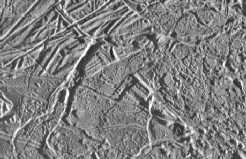This is an image of the surface of Europa.
Click on image for full size
NASA
Europa Ice Flows
This is an example of the surface of Europa. The surface may be flooded by fresh water from underground, which freezes when it touches the surface.
The edges of the flow are rounded, like a puddle of water which froze.
The water of Europa may have flowed out of the ground the way lava flows out of a volcano on Earth.
You might also be interested in:
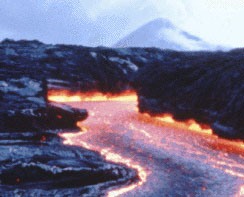
Lava can move in two ways, wide flat lava flows, or through channels which squeeze the lava into a small area. The fastest lava flows move at about 6 mi/hr, an easy jog, but they average between 2/3 and
...more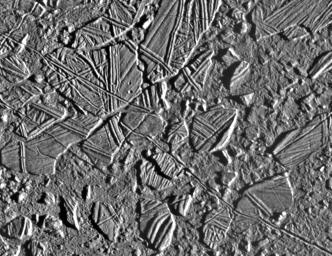
The surface of Europa shows many signs of that there may be an ocean under the icy surface. For example, this picture shows what look like icebergs on Europa. Some look like they broke off a larger block
...more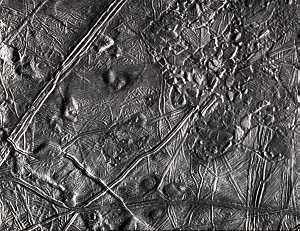
The surface of Europa shows many signs of that there may be an ocean hidden underneath: * flooded areas * 'freckles' * 'rafting' * 'mushy' craters, and * regions of spreading. These clues make it pretty
...more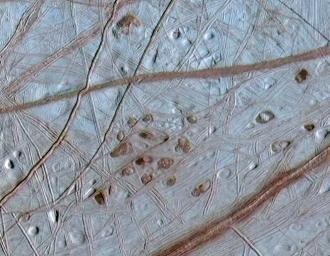
The surface of Europa shows many signs that there may be an ocean under it's icy surface. In this picture, the dimples, shown in red, may be a sign of material falling into a water under the ice. Or they
...more
Amalthea was discovered by E Barnard in 1872. Of the 17 moons it is the 3rd closest to Jupiter. Amalthea is about the size of a county or small state. Amalthea is named after the goat in Greek mythology
...more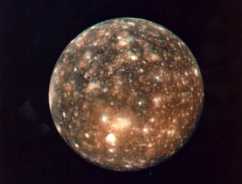
Callisto was first discovered by Galileo in 1610. It is the 2nd largest moon in the solar system, and is larger than the Earth's moon. It is about as big as the distance across the United States. Callisto
...more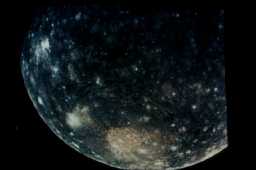
Measurements by the Galileo spacecraft have been shown that Callisto is the same inside from the center to the surface. This means that Callisto does not have a core at the center. This means that, unlike
...more


